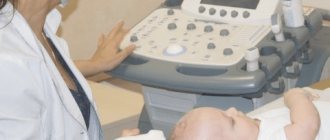Poliomyelitis is a highly contagious viral disease that causes paralysis of the arms, legs, and breathing, and can also cause death. Poliomyelitis pathogens penetrate the oral mucosa mainly through contaminated water. Infection by airborne droplets is also possible.
Poor hygiene conditions favor transmission. The incubation period ranges from 3 to 35 days. After a person gets sick, he develops lifelong immunity (protection against infection) to one viral type (but there are polioviruses types 1, 2 and 3). Only vaccination completely protects against infections of all three types. You can get vaccinated against polio at the RebenOK clinic at the best prices in Moscow.
Characteristics of the disease
The infectious disease is transmitted through the fecal-oral and household contact routes. You can become infected through contact with a sick or infected person, through the use of the same objects. Once on hand, the poliovirus does not die and remains viable. Having penetrated the body, the pathogen begins to actively multiply. The virus remains viable on the surface of objects for up to 4 months, so infection can only be avoided through timely vaccination.
Both adults and children become infected. The risk group consists of preschoolers without vaccinations - they account for the most cases of infection. A favorable environment for the reproduction of poliovirus is the mucous membranes. From the oral cavity, microorganisms move to the intestines, and then are absorbed into the blood and are introduced into the spinal cord. The most serious complication is paralysis. Sometimes the disease ends in death.
In the first days after infection, the clinical picture is blurred, which makes it difficult for doctors to diagnose the disease. The initial symptoms are the same as for ARVI or influenza. Typical phenomena:
- heat;
- runny nose;
- cough;
- abdominal pain;
- indigestion;
- headache;
- muscle pain and joint aches.
By the time the disease is recognized, it is already too late: the poliovirus penetrates the spinal cord and causes irreversible changes. To protect children and adults, scientists have developed two types of vaccines. The difference between them is that one contains killed viruses, the other contains viable ones. Which vaccinations are used depends on the age of the patient.
Diagnostics
In the case of polio, diagnosis is based on laboratory tests. In the first week of the disease, the polio virus can be isolated from nasopharyngeal secretions, and starting from the second week, from feces.
The patient may also undergo the following studies: lumbar puncture, reverse transcriptase polymerase chain reaction of blood or cerebrospinal fluid samples, serological analysis (this method is quite sensitive, but it does not allow distinguishing between post-vaccination and natural infections), electromyography (this instrumental research method allows identify a lesion localized in the anterior horns of the spinal cord already on the first day after the onset of the first symptoms).
When there are no central nervous system manifestations, poliomyelitis (abortive poliomyelitis) resembles other systemic viral infections and is generally not considered or diagnosed except during an epidemic.
How is immunization carried out?
The vaccine OPV is dropped into the mouth, and IPV is administered by injection.
It is allowed to combine 2 vaccinations for children - DPT and polio. You must not eat or drink for the next 60 minutes. At 1.5 years of age, revaccination is carried out, and at 14 years of age - another one. After prevention, resistance to the pathogen develops.
Immunoprophylaxis with a live polio vaccine is permitted when the baby is 6 months old. The vaccination agent is instilled onto the tonsils or tongue. Immunocompromised individuals are vaccinated with IPV containing non-live viruses. In addition, a live polio vaccine and an unvaccinated child are a dangerous combination. The risk of infection for surrounding babies whose bodies are weakened continues for 60 days.
Symptoms and nature of the disease
The incubation period is usually 7-10 days (ranges from 4 to 35 days). The first symptoms are fever, fatigue, headache, vomiting and pain in the limbs.
Complications after an illness
Acute flaccid paralysis (usually of the legs) develops in one in 200 cases of infection. Persistent, irreversible paralysis and resulting deformities of the lower extremities are a common consequence of the disease.
Poliomyelitis is also dangerous due to other complications: pneumonia, pulmonary atelectasis, interstitial myocarditis; Sometimes acute dilation of the stomach and severe gastrointestinal disorders with bleeding, ulcers, and perforation develop.
How does the vaccine work?
During vaccination, killed or live but weakened polioviruses enter the body. In this case, the body produces special bodies that spread throughout all organs and tissues. When a pathogen enters the blood, these bodies trigger the mechanism for producing antibodies. To develop resistance to the disease, one contact with a weakened or non-living virus is enough.
The consequence of vaccination against polio with the OPV vaccine is the release of viral particles into the environment. There are few of them, but the risk of infecting others is still present. This does not happen when using an inactivated vaccine. But it also has a drawback. In the last century, one injection using IPV was enough for a person to acquire lifelong immunity. But viruses mutate and therefore there was a need to use a drug containing live pathogens. Nowadays, in order for children to develop immunity after vaccination against polio, the drugs are combined.
polio vaccination
"Wild" alien
Polio was a real scourge among the inhabitants of Europe and North America until the 50s of the last century, when scientists finally created an effective vaccine
against it.
It is believed that polio was almost completely eradicated in the Soviet Union by 1961. However, in 2010, the largest outbreak of polio
- more than 700 people fell ill, and 26 of them died.
The virus penetrated across the border into Russia, which was until now considered a country free from this disease. The so-called wild strain
of the virus, characteristic of India, Pakistan and Afghanistan, is rampant.
What are the polio vaccinations?
There are only 2 types of vaccines: IPV and OPV. Both protect against polio, but are used in different situations. Features of the drugs:
- OPV. a vaccine containing live pathogens. Clinical trials, after which the polio vaccine began to be used en masse, were conducted in 1960. Active components - 3 strains of poliovirus. Virus cultures are grown in monkey cells, so they are weakened. The oral route of administration was not chosen by chance. Real infection occurs through the mouth, thus simulating infection is achieved. After polio vaccination, cellular and humoral immunity is formed in the child’s body, that is, not only specific antibodies are produced, but also lymphocytes and phagocytes. The disadvantage of a live vaccine is that although the pathogens are not initially pathogenic, in some cases it may become pathogenic. This means that viruses can become active and trigger the development of vaccine-associated polio.
- IPV. Polio vaccine containing non-live viruses. Initially, it was used for vaccinations against polio in children. The drug is administered subcutaneously, after which humoral immunity is developed. But the effectiveness of IPV is lower than OPV. This is due to the fact that the virus does not pass along the surface of the digestive tract, and protection does not form in this area. A small chance of contracting polio remains even after 3 injections.
Children who have recovered from the disease still require vaccination, since it protects against three strains at once, and immunity after an illness is developed only to one - to the one with which the patient was infected.
When are IPV and OPV vaccines given?
Both types of vaccine can be used to vaccinate children. Vaccination is carried out according to the schedule. By the time a child goes to school or kindergarten, he must have received all required vaccinations against polio.
Polio vaccination schedule
According to the national vaccination calendar, the following polio vaccination schedule is applied:
- 3 months;
- 4.5 months;
- 6 months (starting from this age, OPV can be used);
- 1st revaccination - at 1.5 years;
- 2nd - at 20 months;
- 3rd - at 14 years old.
If IPV vaccine is used, the regimen is different. Children with immunodeficiency receive 3 vaccinations; everyone else needs two. The first immunization is carried out at 2-3 months, subsequent ones - with an interval of 45 days. A year after primary immunization, revaccination against polio , and after 5 years - another one.
The live vaccine is more effective, but it often causes side effects, and there are more contraindications to it than to IPV.
Unscheduled polio vaccination
Sometimes it becomes necessary to vaccinate a patient outside of the schedule. Typical situations:
- There is no information about whether the vaccine was previously given. Vaccination is carried out in the same way as unvaccinated children. Those under 3 years of age are vaccinated 3 times with an interval of 1 month, then revaccinated 2 times. At the age of 3 to 6 years, 3 vaccinations are also carried out, but there is only one revaccination. Until the age of 17, the remaining vaccinations provided for in the schedule are given.
- A single immunization with the OPV vaccine is carried out if you are planning to travel to an exotic country. It is recommended that children be vaccinated against polio 4 months in advance so that immunity can develop.
- unscheduled immunization is carried out when the number of registered cases of pathology exceeds the established threshold. How many polio vaccinations you will need to receive depends on the strain that caused the epidemic.
Where do you get the polio vaccine?
Drops are introduced into the oral cavity using a dropper or a disposable syringe without a needle. The vaccine is placed on the root of the tongue or applied to the tonsils. These areas were not chosen by chance: when the drug gets on them, there is no excessive salivation and accidental ingestion is excluded.
Depending on the concentration of OPV, one dose is 2 or 4 drops. In a small child, after a polio vaccination, the reaction may manifest itself in the form of regurgitation. Then another dose is administered. In case of repeated regurgitation, immunization is carried out after 1.5 months.
The IPV vaccine is administered intradermally. Children under 1.5 years old are given an injection under the shoulder blade, and at older ages - in the thigh. Since children tolerate the vaccination well, you can go home immediately after the procedure.
polio vaccine for children
Post-polio syndrome
After suffering from polio, some patients continue to have limited capabilities and a number of manifestations for many years (on average 35 years), the most common of which are:
- progressive muscle weakness and pain;
- general weakness and fatigue after minimal exertion;
- amyotrophy;
- breathing and swallowing disorders;
- breathing disorders during sleep, especially sleep apnea;
- poor tolerance to low temperatures;
- cognitive impairment - such as decreased concentration and difficulty remembering;
- depression or mood swings.
Side effects of the polio vaccine
A normal reaction to immunization is slight redness and swelling. These phenomena soon pass. Undesirable reactions in a child to vaccination are rare. These include:
- Digestive disorder. Seen in very young children. If loose stools persist for 1-2 days, you need to show your baby to a doctor. It is important not to delay, since problems with the gastrointestinal tract can be not only a consequence of vaccination, but a symptom of an intestinal infection.
- Vaccine-associated polio (VAPP). Appears 4-13 days after OPV administration. With vaccine-associated polio, symptoms in children after vaccination are as follows: headache, weakness, high fever, muscle and back pain, weakened tendon reflexes, paralysis.
If VAPP is suspected, the patient is admitted to the hospital. Treatment is the same as for the usual form of the disease.
adverse reactions after polio vaccination
Adverse reactions
The combination polio vaccine, often used in infants, is generally well tolerated. There may be redness or painful swelling at the injection site. Allergic reactions are also possible.
As the immune system reacts to the vaccine, it may temporarily cause various illnesses. These include, for example:
· headaches and aches;
· gastrointestinal discomfort;
· fever and fatigue;
· irritability and chills.
These vaccination reactions usually resolve on their own within 1-3 days.
What to do if you miss the recommended deadlines
If you fail to get vaccinated on time, you need to contact your pediatrician. He will prescribe an individual scheme. It is important at what stage the deviation from the recommended deadlines occurred. If one of the first vaccinations is missed, continue vaccination according to the calendar. In some cases, revaccination is carried out earlier, based on how much time has passed between the first vaccinations.
It is important that by the age of 7 the child has received 5 vaccinations against polio.
If it is not possible to find out what vaccinations the baby received previously, do this:
- up to one year - vaccination is carried out according to the polio vaccination schedule for children;
- from one year to 6 years - the vaccine is administered twice, with an interval of 30 days;
- from 7 to 17 years old - one vaccination is given.
Is it necessary to carry out
In Russia, polio vaccination for children under 14 years of age is mandatory, according to the resolution of the Ministry of Health.
The polio virus is dangerous mainly for young children under 5 years of age. The lower extremities suffer the most, and after being ill, the child may become disabled. In more than 5% of cases, paralysis affects the respiratory muscles, which can be fatal.
Poliomyelitis is spread by airborne droplets and household routes. A person can be a passive virus carrier, being a source of infection for others. There is no cure for polio, and the only effective method of protection is vaccination.
Contraindications to immunization
Conditions and pathologies in which the administration of oral polio vaccine (OPV) is prohibited:
- history of neurological reactions to vaccinations;
- contact with a pregnant woman;
- history of immunodeficiency;
- cough, runny nose;
- infectious pathology occurring in an acute form;
- immunodeficiency in one of the family members;
- exacerbation of a chronic disease;
- allergy to neomycin, streptomycin, polymyxin B.
Contraindications to the use of inactivated polio vaccine (IPV):
- hypersensitivity to neomycin and streptomycin;
- an allergy to the vaccine that appeared after a previous vaccination;
- exacerbation of a chronic disease;
- the presence of a malignant tumor;
- infectious or non-infectious disease in acute form.
Treatment of polio
Now polio is quite rare - this is due to centralized vaccination, thanks to which children from an early age develop immunity to the polio virus, and therefore calmly tolerate contact with it.
Treatment measures against polio require mandatory hospitalization. Bed rest, painkillers and sedatives, as well as thermal procedures are prescribed. For paralysis, comprehensive rehabilitation treatment is carried out, followed by supportive treatment in sanatorium-resort areas.
Complications of polio such as respiratory failure require urgent measures to restore breathing and resuscitate the patient. Mild forms of poliomyelitis (occurring without damage to the central nervous system and meningeal) pass without a trace. Severe paralytic forms can lead to permanent disability and death.
Back to articles
FAQ
Parents tend to be interested in details regarding immunization. They ask how many polio shots are given , whether children are contagious, when is the best time to get vaccinated, how best to prepare, and what to consider. Doctors give comprehensive answers to the most common questions.
Is the polio vaccine safe for children?
Vaccination with a drug based on inactivated viruses is absolutely safe. Non-living pathogens are not able to provoke the development of the disease. There is a risk of contracting polio after vaccination if the vaccination is carried out with an oral preparation. In practice, the frequency of such cases is 1 in a million. Children with immunodeficiency and gastrointestinal diseases are at risk. Patients who have suffered a vaccine-associated form of pathology can only be vaccinated with IPV.
Due to their heavy workload, doctors do not always have the opportunity to instruct parents on how to properly prepare for immunization and what to do after vaccinations against polio and DPT. Here's what you need to know:
- the day before vaccination, blood and urine tests are taken. The referral is issued by the pediatrician.
- Shortly before the procedure, you need to feed the child his usual food that does not cause allergies. It is worth avoiding any foods that can cause digestive upset. It is recommended to stick to a gentle menu for several days after immunization.
- If you have a fever after getting a polio vaccine, this may indicate an infectious disease. Some parents mistakenly take a high temperature for a complication after vaccination and do not consult a doctor, making do with antipyretic drugs. This behavior is unacceptable.
When is the best time to reschedule the vaccine?
If the baby has recently been ill and is still weak, vaccination is postponed to a time when he feels good. If a child visits a child care facility and quarantine is declared there, the doctor must make sure that he is healthy. Vaccination is also postponed if complications have previously appeared after vaccination with DTP or other vaccines. In this case, the pediatrician monitors the baby’s condition.
Are children contagious after polio vaccination?
There is a chance of contracting polio after vaccination if a live vaccine is used. The following categories are at risk:
- children suffering from congenital pathologies of the digestive system;
- patients with impaired immunological reactivity;
- pregnant women (both mother and child are at risk of infection).
The incidence of the disease is 1 case in 500 thousand - 2 million doses. In many countries this has led to the abandonment of OPV use. In Russia, this type of vaccine is still used.
Parents are wondering whether it is possible to have contact with unvaccinated children. Theoretically, a baby vaccinated with a live vaccine is dangerous for some people. It is worth limiting contacts with the following categories of the population:
- undergoing chemotherapy;
- HIV-infected;
- unvaccinated children with congenital immunodeficiency;
- persons taking drugs to suppress the immune system.
In practice, it is difficult to follow this recommendation, so for the first few days after vaccination it is better not to visit crowded places so as not to expose them to the risk of infection.
How to prepare a child
The pediatrician will tell you what tests your child needs to do. Only healthy babies can be vaccinated. There should be no cough, runny nose, fever, indigestion or allergic symptoms. Breakfast should be light, drinking should not be too much. When going to the clinic, you need to dress your child so that he does not get cold or sweat.
Is it possible to get vaccinated if you have a runny nose?
On the day you are vaccinated against polio, you should not have a runny nose. If parents suspect that the baby is sick, but are not sure, they should consult a pediatrician. Perhaps the baby develops ARVI or the flu, then the vaccination will have to be rescheduled.
Should you bathe your baby?
You can bathe your child after vaccination, being careful, including not allowing him to freeze. However, on the day of vaccination it is better to do without swimming. The next day, short-term water procedures are allowed without using a washcloth. In the following days, the baby is washed as usual. It is recommended to check with your pediatrician about whether it is possible to bathe your child after polio vaccination if the baby has chronic diseases. In this case, it is better to play it safe.
Poliomyelitis in adults. Prevention
An acute infectious disease caused by a virus of the same name, characterized by damage to the central nervous system, primarily to the cells of the anterior horns of the spinal cord responsible for motor activity, the membranes of the brain and spinal cord. It is observed more often in children and leads to the development of paralysis.
- Diagnosis of polio in children
- Features of polio in adults
- At what age is polio vaccination given to children?
- Fever after polio vaccination
Polio
One of the childhood infections that is very dangerous and leaves behind severe complications is polio. It mainly affects preschoolers, but older children and adults can also suffer from it. You can protect yourself and your children from polio by getting vaccinated against this disease, which begins in the first year of life. How does polio progress in children? Is the polio vaccine really necessary? Is there another way to prevent polio? What are the consequences and complications of polio?
What is polio
Poliomyelitis is a viral infection in which the tissue of the nervous system is involved in the inflammatory process. The nervous system is affected by a type of flaccid paralysis. In addition to neurological signs, symptoms of intoxication are noted. The vast majority of cases of polio occur in children.
Poliomyelitis virus is the causative agent of the disease
The polio virus is the culprit of this serious disease. It's called poliovirus. There are three types of pathogen (poliovirus). The polio virus belongs to a subgroup of enteroviruses. It contains ribonucleic acid (RNA). The polio virus is unstable if it is heated or treated with disinfectants. In addition, antibiotics do not affect it.
Routes of infection with polio
You can become infected with the polio virus from a sick person or a virus carrier. The pathogen enters the environment with the patient’s feces; this process continues for several weeks. The virus can be detected in mucus from the nasopharynx for no more than two weeks. The first five days the patient is considered especially contagious to others. The virus is transmitted in two ways: fecal-oral and airborne, with the first route being the leading one.
The primary reproduction of the virus occurs in the digestive tract, namely on its mucous membrane. In addition, the virus multiplies in the mucous membrane of the nasopharynx. The pathogen then spreads throughout the body through the bloodstream. If it overcomes the barrier with the central nervous system, a paralytic or meningeal form of the disease will occur.
Classification of polio
Like most infectious diseases, polio has its own classification. The infectious process can be of varying degrees of severity (from mild to severe), occurring in typical and atypical forms. The severity of the disease is determined based on the severity of symptoms of intoxication, as well as the nature of motor disorders.
Sometimes the disease proceeds smoothly, but in some cases complications arise and other infections occur.
Prevention of polio
Vaccination against polio is the best way to prevent the disease. Yes, it happens that a vaccinated child gets sick with polio, but in this case the disease is mild, with minor symptoms of intoxication.
Among their neurological symptoms, muscle spasms predominate. Mild paralysis of the leg muscles also occurs in vaccinated people who are sick with polio; they are manifested by limping and muscle weakness. However, these symptoms quickly disappear, and muscle hypotonia persists for a longer time. Persistent complications of polio are not typical for vaccinated children.
Non-specific methods of prevention include maintaining personal hygiene, washing hands after visiting the toilet and before eating, limiting contact with the sick.
Measures at the source of infection
As soon as a doctor or paramedic identifies a patient with polio, he must send an emergency notification to the Center for Hygiene and Epidemiology. The sick person himself is isolated for a period of 3 weeks to 40 days. After the patient is hospitalized, the outbreak is disinfected.
All exposed children under 7 years of age are given emergency immunization. Is it possible to urgently vaccinate against polio for those children who have previously been vaccinated against this infection? It must be done only once. This does not depend on how the child was vaccinated previously. However, at least 6 weeks must pass from the last vaccination.
If emergency vaccination is the first against polio, then subsequent vaccinations are carried out at the necessary intervals.
Poliomyelitis in children
Poliomyelitis in children occurs in various forms. It is not always possible to make a diagnosis, as the signs may be nonspecific. Parents may not even know that their child has suffered from polio. However, there are very severe forms of the disease, with classic neurological symptoms, according to which an experienced doctor will definitely suspect infection with the polio virus.
The latent (incubation) period of infection lasts from 5 days to 5 weeks. On average it lasts about two weeks. With the disease “poliomyelitis,” the symptoms depend on the form of infection, of which there are several.
- Inapparent form of infection
In other words, this form of infection can be called healthy virus carriage. Such a diagnosis can only be made in a laboratory. This form of the disease is rather of scientific interest, since the carrier of the virus himself does not complain about anything and is not dangerous to others. The virus remains in the intestine and does not go beyond it.
- Abortive form of the disease
It is very difficult to suspect polio in this form, since there are no typical symptoms of the disease; the entire infection is hidden under the guise of an acute respiratory disease (ARI). The child develops a slight increase in temperature, weakness, loss of appetite, cough, runny nose, discomfort in the throat, and intestinal disorders. There are no neurological symptoms of polio. The child gradually recovers on his own and requires only simple symptomatic treatment.
- Non-paralytic poliomyelitis (meningeal form)
The disease occurs in the form of serous meningitis. Characterized by an acute onset of the disease, in which the child becomes ill very quickly. He is bothered by headaches, high fever, and frequent vomiting. During the examination, the doctor or paramedic notes positive meningeal symptoms in the patient, which is one of the criteria that the child has inflammation of the membranes of the brain.
With this form of the disease “poliomyelitis” the symptoms are vivid, there are signs of involvement of the nervous system in the process. I am concerned about pain along the nerve trunks. It is difficult for a sick child, he refuses to eat, lies down almost all the time, sleeps, and often cries. Muscle twitching may be observed. This is typical for the first days of illness. There may be some eye symptoms. Paralysis does not occur with this form of polio in children. The child makes a full recovery.
- Paralytic polio
The symptoms of polio in this form of the disease are even more striking; they change in different periods of the disease. In total, it is customary to distinguish four periods of paralytic poliomyelitis.
The preparalytic period of the disease lasts from one to six days. The disease begins with pronounced symptoms of intoxication and high temperature. Sometimes signs of digestive tract disorder appear in the form of constipation or diarrhea. A number of sick children have catarrhal symptoms (sore throat, runny nose, cough).
After a couple of days, the child develops neurological symptoms: pain in the back, arms, legs is noted, sensitivity to various irritants increases, and symptoms of irritation of the meninges become positive. Because of such unpleasant sensations, the sick person tries to lie still.
The paralytic period lasts from a couple of hours to two weeks. Its symptoms vary depending on the specific location of the nervous system lesion.
When neurons located in the anterior horns of the spinal cord, which are responsible for movement, are damaged, a spinal infection develops. Within a week from the onset of the disease, the child develops paralysis. They appear suddenly and develop very quickly. The nature of the paralysis is flaccid, muscle atrophy is present. Sensitivity does not change. It is characteristic that the proximal parts of the extremities (shoulder, thigh) suffer more.
With polio in children, it is not just the limbs that are affected. The intercostal muscles and diaphragm are often involved in the process. In this case, signs of respiratory failure appear.
There is another form of the disease - bulbar. The child has a very pronounced intoxication syndrome, headache and vomiting. Neurological disorders appear very quickly: the child cannot swallow normally, chokes, thin food gets into the nose, the tone of the voice changes (hoarse, hoarse). Since the baby cannot swallow food and saliva normally, his breathing appears bubbling. In some cases, the disease goes so far that the vasomotor and respiratory centers are damaged, paralysis of the diaphragm occurs, which can lead to the death of the baby.
The third form of infection is called pontine. In this case, the bridge in the brain and the nuclei of the cranial nerves, which are located there, are damaged. When the facial nerve is damaged, paralysis of the facial muscles is observed, which is manifested by facial asymmetry, different sizes of palpebral fissures and other signs.
The recovery period for polio in children lasts a long time, from one to three years. The disease makes itself felt for a long time, namely: muscle tone remains reduced for a long time, reflexes from the limbs are not evoked, muscles remain atrophied. Muscle functions are restored gradually and unevenly. Because of this, the consequences of polio include various deformities of the limbs, stiffness (contractures), retarded growth of the affected limb, and lameness.
During the period of residual effects of the disease “poliomyelitis”, consequences are visible that remain with a person for life. Such consequences include persistent flaccid paralysis, deformities of the limbs, shortening of the arms or legs, and atrophy of the muscles of the limbs.
Diagnosis of polio in children
Diagnosis of polio in children is based on medical history, examination of the patient and study of his complaints, as well as on the results of additional studies.
Nonspecific methods for diagnosing polio are as follows:
- General blood analysis
In this analysis, there may be no pathological changes or a moderate increase in leukocytes due to neutrophils.
- Lumbar puncture and cerebrospinal fluid examination
One of the additional diagnostic methods is the study of cerebrospinal fluid obtained by lumbar puncture. Pathological changes in the cerebrospinal fluid occur in non-paralytic and paralytic poliomyelitis.
Cerebrospinal fluid flows out under higher pressure, cytosis (cell number) moderately increases due to lymphocytes, glucose does not increase. Protein in the cerebrospinal fluid may increase in the paralytic form of polio.
- Electromyography
This instrumental research method makes it possible to identify lesions localized in the anterior horns of the spinal cord already on the first day after the onset of the first symptoms.
- Nuclear magnetic resonance imaging of the spinal cord
This study is informative after the acute period of the disease, when the patient begins to recover. It can reveal spinal cord atrophy, which depends on the level of damage.
Specific methods for diagnosing polio are aimed at identifying the pathogen itself or antibodies to it. These include the following methods:
- Virological research
For this study, feces and cerebrospinal fluid are collected from the patient. Moreover, a double examination of feces is required for a patient admitted to the hospital. The material is taken for analysis two days in a row.
- Express diagnostics
To quickly diagnose an infection, an immunofluorescent assay (ELISA) is used, which can be used to detect the virus itself in the patient’s stool or cerebrospinal fluid.
- Serological study
This polio test detects antibodies to the polio virus. Blood and cerebrospinal fluid are taken for analysis. The study is carried out repeatedly, since it is necessary to determine the dynamics of the growth of antibodies and determine type-specific antibodies.
Treatment of polio in children
- If a child is suspected of having polio, he is hospitalized in the infectious diseases department. It must be placed in a separate box.
- It is very important to maintain strict bed rest. The child needs peace.
- In the acute period, thermal procedures on the affected limbs are effective. These include hot wrapping, applications with paraffin and ozokerite.
- To relieve severe pain and alleviate the symptoms of intoxication, the use of analgesics and antipyretics is justified.
- As therapy aimed at the causative agent of the disease, recombinant interferons are prescribed (usually in tablets or suppositories).
- Sometimes diuretics are prescribed to relieve intracranial pressure.
- From the third week of illness, drugs are used that improve neuromuscular conduction (prozerin, galantamine).
- During the recovery period, it is very important to carry out therapeutic exercises and massage. Also, a good effect is observed after sanatorium treatment.
Complications of polio in children
An alarming reaction to the diagnosis of polio is completely justified, because parents, as a rule, have heard about the serious consequences of the disease. Abortive and meningeal forms of the disease occur without consequences.
With the disease polio, the consequences and complications remain after the spinal form of the infection. Some disorders resolve over time. Others stay for a long time or for life. The most severe complications arise from deep injuries. The child may be left lame or have permanent paresis or paralysis of the facial nerve and other cranial nerves.
A fatal outcome may occur in the patient if the vital centers of the brain are involved in the process. Aspiration pneumonia often develops against the background of severe respiratory disorders. Complications such as destructive processes in the lungs and atelectasis were also noted.
Poliomyelitis in adults
Poliomyelitis in adults is very rare, since most people are still vaccinated against this serious infection in infancy. Prevention of polio in some countries is so effective that not a single case of the disease has been reported in them for many years.
For those people who are contraindicated from receiving live vaccines, polio prevention is carried out with inactivated vaccines. However, in some cases this infection still occurs in adults.
Features of polio in adults
As a rule, poliovirus infection occurs in adults who suffer from severe immunodeficiency conditions, such as HIV infection (human immunodeficiency virus). A weakened adult is usually infected from a sick child or from a baby who has recently been vaccinated with a live polio vaccine.
The disease occurs with the same symptoms as in children. Sometimes the infection is not recognized, as it occurs under the guise of an acute respiratory infection. In other cases, damage to the nervous system occurs, paralysis and paresis of the limbs, cranial nerves, and diaphragm develop. Diagnosis and treatment of the disease in adults are similar to those in children.
Consequences of polio in adults
In most cases, polio in adults occurs without serious consequences, impaired functions are gradually restored. Persistent neurological impairment remains uncommon. Fatal outcomes in adults also occur, but with timely diagnosis and treatment, they are rare.
Vaccination against polio
According to the vaccination calendar, according to the rules, vaccination against polio begins in the first half of the baby’s life. Polio vaccinations for children are the best way to prevent this terrible disease.
At what age is polio vaccination given to children?
Children are vaccinated against polio according to the calendar in the first year of life. Following the calendar, the polio vaccine is given first at 3 months, then two more times with an interval of 6 weeks. Sometimes the immunization schedule is disrupted. But in any case, it is important to observe the time interval between vaccine administrations; it should be at least 6 weeks (between the first three).
Many parents are afraid to violate the vaccination schedule and ask the question: “Is it possible to be vaccinated against polio if the child has slight catarrhal symptoms (mild cough, runny nose)?” No, a child can be vaccinated no earlier than 2-4 weeks after recovery. This rule is especially strict when a child is given a live vaccine. The fact that vaccination is carried out not with injections, but with drops, does not reduce the possibility of adverse reactions and complications. Although some parents mistakenly consider drops to be an “easy” method of vaccination.
When is revaccination against polio carried out?
Revaccination against polio is done three times. Children in the second year of life are revaccinated against polio twice (at one and a half years and at 20 months), and the final time at 14 years. Revaccination against polio is carried out with live vaccines if the child has no contraindications to this.
What are the polio vaccines?
Polio vaccines are available live and inactivated (killed). Different countries have different polio vaccination schemes in terms of the choice of live or inactivated vaccine. For a short time, only live polio vaccine was used. Currently, our country has adopted a combined scheme for vaccinating children against polio. That is, children are vaccinated against polio with both inactivated and live vaccines.
Live polio vaccine (drops)
If a child is vaccinated against polio infection, which live vaccines can be given?
OPV is a vaccine whose name stands for “oral polio vaccine.” Oral means given to the child through the mouth. By the way, this is the only vaccination that is given to children in this way. This vaccine is produced in our country.
The imported live polio vaccine, which is also used in our country, is called Polio Sabin Vero. It is used in exactly the same way as OPV.
What are polio drops? Polio drops is the colloquial name for live polio vaccine.
When vaccinated against polio, drops are given to a child as follows: one hour before meals, the nurse puts drops into the mouth (four drops when using OPV and 2 drops when using Polio Sabin Vero). This can be done using a pipette, a special dropper or a syringe. You should not drink any liquid after administering the drops. The baby does not feed for an hour after vaccination.
If during vaccination against polio drops the baby burps or vomits, then you must immediately give him a second dose of the polio vaccine. If regurgitation occurs again, a new dose is given only at the next vaccination visit.
The live polio vaccine is given once in the first year of life (third vaccination). Then all revaccinations against polio are carried out with a live vaccine. Often, parents choose imported combination vaccines against several diseases at once, in which protection against poliovirus is presented in an inactivated form. In this case, the child receives all three first vaccinations with an inactivated vaccine, and the live one is administered only during revaccination. This is not a violation of the rules for vaccinating children.
Conducted studies prove that even a single vaccination with a live vaccine forms immunity against poliovirus infection in more than 90% of those vaccinated. But repeated vaccination is justified, since polio is caused by three different viruses, and a single vaccination does not always protect against three viruses at once.
Inactivated polio vaccine
In our country, it is currently customary to give the first two vaccinations against polio with inactivated vaccines, followed by a live vaccine. Until recently, there was a scheme when all three vaccinations were given with inactivated vaccines in the first year of life. It is worth noting that many parents still adhere to this old vaccination schedule for their children.
Some children have contraindications for vaccination with live vaccines. These children are vaccinated against a disease such as polio only with killed vaccines.
A primary course of immunization with an inactivated vaccine provides good protection against poliovirus infection in more than 96% of vaccinated individuals. In a number of countries where no cases of polio have been reported for many years, vaccinations are given only with inactivated vaccines.
There are mono vaccines for the prevention of polio, that is, they protect only against this disease. And there are also combination drugs. An example of a monovaccine is Imovax Polio.
Can the polio vaccine be given with other vaccinations?
Modern parents are often afraid to combine the administration of several vaccines in one day. Is it possible to vaccinate children against polio on the same day as other vaccinations?
If a child is vaccinated according to the calendar and does not have an individual vaccination schedule, then on the same day he is vaccinated against the following diseases: whooping cough, tetanus, diphtheria and polio.
In some cases, a child is given either 2-3 vaccinations at once, or a combined vaccine is simply given. For example, there are vaccines called “Tetracok”, “Infanrix IPV”, which contain components against protection against the following infections: whooping cough, tetanus, diphtheria, polio.
Recently, vaccination against hemophilus influenzae infection has appeared on the schedule; it is also done on the same day. Vaccines have been developed that contain protection against all of these diseases: whooping cough, tetanus, diphtheria, polio and Haemophilus influenzae. An example of such a vaccine is the drug Pentaxim.
In the first year of life, the baby is vaccinated against hepatitis B three times. If you follow the calendar, the third vaccination against hepatitis B (at 6 months) coincides with the last vaccination against diseases such as tetanus, whooping cough, diphtheria and polio.
If the immunization schedule is disrupted, vaccination against hepatitis B may coincide with other administrations of vaccines against the above diseases, that is, not only at the age of six months.
It is possible to use a monovaccine against hepatitis B, while giving an additional injection to the child. Another, more gentle method of vaccination is possible. For this purpose, vaccines are used that protect against several diseases, as well as hepatitis B.
The Infanrix Penta vaccine protects the child against the following infections: whooping cough, diphtheria, tetanus, hepatitis B and polio. The Infanrix Hexa vaccine provides protection against six diseases: whooping cough, diphtheria, tetanus, Haemophilus influenzae, hepatitis B and polio.
The Hexavak vaccine contains immune components against the following diseases: whooping cough, tetanus, diphtheria, Haemophilus influenzae, hepatitis B and polio.
Sometimes hepatitis B vaccinations are started or continued in the second year of life for various reasons. Some immunizations may coincide with polio vaccinations. Therefore, the following combination of vaccines against hepatitis B and polio is quite realistic: hepatitis monovaccine + OPV, as well as other combinations.
Is it possible to be vaccinated against polio with a live vaccine in combination with other vaccines that are not listed above? Yes, live polio vaccine is compatible with other vaccines except BCG.
Is it possible to send a child who has not been vaccinated against polio to kindergarten?
Not all parents vaccinate their children. Some people do not get vaccinated because they have contraindications. Some people unreasonably refuse vaccinations, considering them harmful and dangerous. Unvaccinated children often have difficulty visiting childcare facilities. It is impossible not to take them to kindergarten; after all, vaccinations are voluntary.
However, a child who has not been vaccinated against polio will be temporarily suspended from visiting a child care facility if there is a child in his group who has recently been vaccinated against this disease with a live vaccine.
Reaction to polio vaccine
A person may have adverse reactions and complications with any vaccination. If the baby is vaccinated against polio, the vaccination can cause complications and cause normal post-vaccination reactions. It is important to distinguish them from each other.
To prevent the reaction to vaccination against polio from being very pronounced, it is important to approach the issue of vaccination competently and carefully question and examine the patient. It is important to find out if he is allergic to those substances that are part of the vaccines, and also to see if he is currently suffering from acute illnesses.
Fever after polio vaccination
Can the temperature rise after polio vaccination? An increase in temperature after vaccination against polio with live vaccine is not typical.
When using inactivated polio vaccine, fever after vaccination is relatively common. This is usually noted in the first two days after administration of the drug.
Fever is most often observed with combination vaccines, but they also contain components against other infections. In particular, the pertussis component is one of the most reactogenic, so the severity of the reactions may be associated with it.
Sometimes the temperature rises after a polio vaccination, but it is not related to the vaccination, but is only a signal that the child has become infected with some other concomitant infection, in other words, has become ill.
Other possible normal reactions to vaccination
What are some normal reactions to the polio vaccine, other than fever? There is practically no response to the introduction of live polio vaccine in babies and older children.
When a child is given a combination vaccine or an inactivated monovaccine against polio, the body's reaction varies. A normal reaction may be mild intoxication (headache, loss of appetite, sleep disturbance), slight compaction at the injection site and redness (no more than 8 cm in diameter), as well as slight pain.
Complications of the polio vaccine
If a child is vaccinated against polio, can the vaccination cause complications?
What complications occur with the polio vaccine?
It is possible to develop local complications following vaccination: a purulent inflammatory process at the site of drug administration, purulent inflammation of the lymph nodes, induration and redness greater than 8 cm in diameter.
Allergic reactions to the polio vaccine are its complications. They manifest themselves as various swellings and rashes. A severe reaction is the development of anaphylactic shock to the administration of the drug. Allergic complications occur in the first days after immunization. Typically, allergies occur to vaccine excipients, which can be chicken protein, streptomycin, neomycin and others.
A very serious complication of polio vaccination is the development of vaccine-associated polio. This complication occurs in one out of 1.5-2 million vaccinated children. Children who have not been vaccinated against polio can also get sick if they have been in contact with a child who has been vaccinated with a live vaccine against this disease. These children are called contacts of children vaccinated with live polio vaccine.
Vaccine-associated polio is a neurological complication that is manifested by the development of acute flaccid paralysis in the baby. At the same time, he retains sensitivity. After the illness, the child has lifelong immunity.
The development of this complication begins from 4 to 30 days after vaccination in the child who was vaccinated, and up to 60 days after vaccination, a child who has not been vaccinated against polio (that is, a contact) may become ill. Therefore, children who have not been vaccinated against polio should not come into contact with those children who have been vaccinated against this infection for 8-9 weeks.
How to behave after, what to pay attention to
It is recommended to avoid visiting public places for 1-2 days. Whether a child is contagious after receiving a polio vaccine depends on the type of vaccine. You should ask your doctor about this. You also need to monitor the injection site - it may become red or inflamed. You can eat and drink 1-2 hours after the procedure. If suspicious symptoms occur, you should consult your doctor. After vaccination, the pediatrician will instruct you on what to do if your baby feels unwell.










